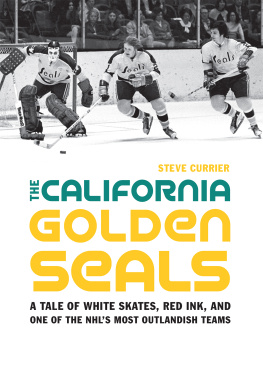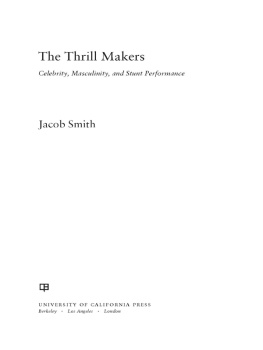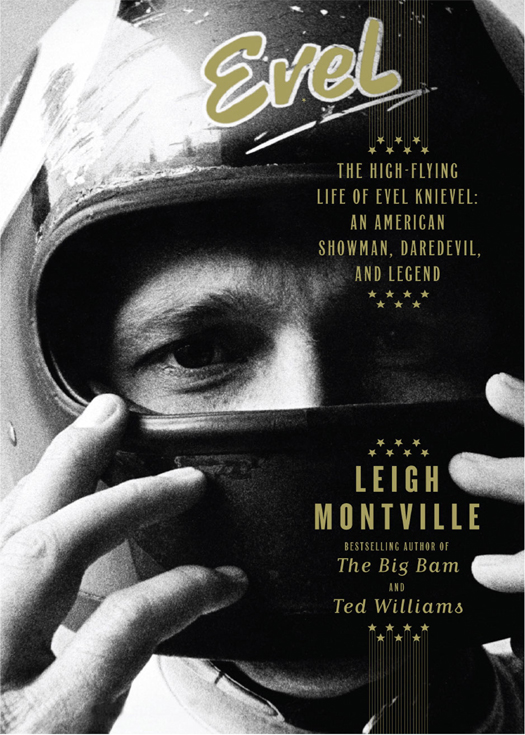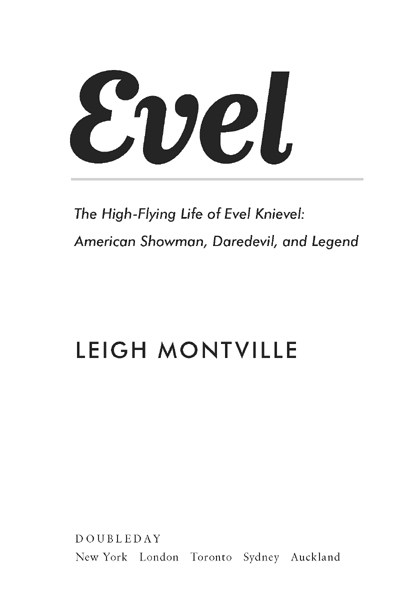Also by Leigh Montville
The Mysterious Montague
The Big Bam
Ted Williams
At the Altar of Speed
Manute: At the Center of Two Worlds


Copyright 2011 by Leigh Montville
All rights reserved. Published in the United States by Doubleday, a division of Random House, Inc., New York, and in Canada by Random House of Canada Limited, Toronto.
www.doubleday.com
DOUBLEDAY and the portrayal of an anchor with a dolphin are registered trademarks of Random House, Inc.
Grateful acknowledgment is made to the following for permission to reprint previously published material:
Dick Cavett: Interview from The Dick Cavett Show, copyright 1971, reprinted by permission of Dick Cavett.
FeelingRetro.com: Toy collectors comments, reprinted by permission of FeelingRetro.com.
The Montana Standard: Citizens of Butte letter, reprinted by permission of The Montana Standard, Butte, Montana.
Rolling Stone: Excerpt from King of the Goons by Joe Eszterhas from Rolling Stone, November 7, 1974, copyright 1974 by Rolling Stone LLC. Reprinted by permission of Rolling Stone magazine.
Jacket design by Michael J. Windsor
Library of Congress Cataloging-in-Publication Data has been applied for.
eISBN: 978-0-385-53367-6
v3.1
For Colin Andrew Moleux
Born September 8, 2008
I had his action figure!! Mom picked it up for me at Amvets because she was too poor to buy me one new. My Evel came with broken parts JUST LIKE THE REAL THING!
Special Ed V, October 6, 2008,
WTOP message board
You can waste your time on the other rides
This is the nearest to being alive
Richard Thompson, Wall of Death
Contents
Introduction
The first biography of Evel Knievel was written in the winter of 197071 in three days, maybe four, maybe five, hard to remember, in a house in Palm Springs, California, that was owned or borrowed or maybe just rented by George Hamilton, the actor. The sound of the typingyes, an actual typewriter was used to do the jobwas drowned out by the high-fidelity, 33 vinyl majesty of a series of Strauss waltzes that were played constantly from the latest in stereophonic equipment, each note bouncing off the white walls and white ceilings and white furniture and out the open windows to the swimming pool, where assorted women sunbathed without the stifling confinement of clothes.
The first biography of Evel Knievel, of course, was a screenplay.
The writer was twenty-seven-year-old John Milius. He had been hired on the cheap, a flat fee of $5,000, and asked to pound out a script about a thirty-one-year-old motorcycle daredevil from Butte, Montana, who had begunbut only begunto capture the attention of assorted pockets of the American public. The deal was enhanced by the delivery of some fine Cuban cigars, secured from Colonel Tom Parker, best known as the manager of singer Elvis Presley, and the promise that upon completion of his duties Milius would be treated to an afternoon of what he called commercial affection with one of the undressed women at the pool.
He tore into his work. A macho, firearm-loving graduate of the University of Southern California School of Film, frustrated by the fact that his asthma had kept him out of the Vietnam War, which he saw as the great historic moment of his time, Milius was part of a group of young writers, directors, and producers like Francis Ford Coppola, Steven Spielberg, and George Lucas who were in the first throes of success in the film industry. They were all grabbing ideas out of the air, slamming them down on paper, hurrying, hurrying, trying to get things done in a rush because they didnt know how long their good fortune would last.
Milius was in the midst of that hurry-hurry stretch of creativity. He had written part of the script for the movie Dirty Harry, starring Clint Eastwood, which soon would be released
(I know what youre thinkingDid he fire six shots or only five? Clint/Harry said in the most memorable monologue. Well, to tell you the truth, in all this excitement, Ive kind of lost track myself. But, being this is a .44 Magnum, the most powerful handgun in the world and would blow your head clean off, youve got to ask yourself one question, Do I feel lucky? Well do ya, punk?)
Work on Jeremiah Johnson, which would star Robert Redford, was pretty much finished, and Miliuss next project was The Life and Times of Judge Roy Bean, which would star Paul Newman. The pieces of dialogue for Apocalypse Now (I love the smell of napalm in the morning) already were floating around in his busy head. Evel Knievel fit in there quite well too.
The idea of a guy, some crazy son of a bitch, jumping over an ever-growing string of parked cars on a motorcycle was revolutionary, different, funky, extreme. The story offered a combination of noise, smoke, crashes, broken bones, white motorcycle leathers, American individualism, and a long middle finger lifted directly at all forms of authority. This was a definite plus in a time of long middle fingers everywhere pointed at all forms of authority. Add a dash of romance, maybe a warning about trying any of these stunts at home. Shake well. Pour.
This was fun.
The whole thing was modern and absurd, Milius said years later. This character going over trucks on his motorcycle, riding through flaming hoops and all that. I just settled down and did it. I played that one record of Strauss waltzes over and over again. (I love Strauss waltzes.) I wandered around the white furniture, white walls, felt I soiled anything I touched. There was a bumper pool table in the house. I took breaks. I learned how to play bumper pool.
This was a lot of fun.

Facts were not a problem. Milius had never met Evel Knievel and had never been to the copper-mining splendor/grime of Butte, Montana, but that didnt matter much. First of all, the foundation of Knievels life story was filled with half-truths, semi-truths, and flat-out whoppers anyway, a collection of tall tales designed by the man himself to make people perk up and pay attention. He would say anything to make himself more marketable. Second, the task was not so much to write an actual portrayal of Evel Knievels life, but to write a vehicle for George Hamilton to look very good on a motorcycle in the leading role. Hamilton had put the production together, hoping to energize a career that had grown fuzzy in the wilds of network television with a couple of canceled series. He wanted to add a little hair and grit to his perceived image as a well-tanned playboy.













